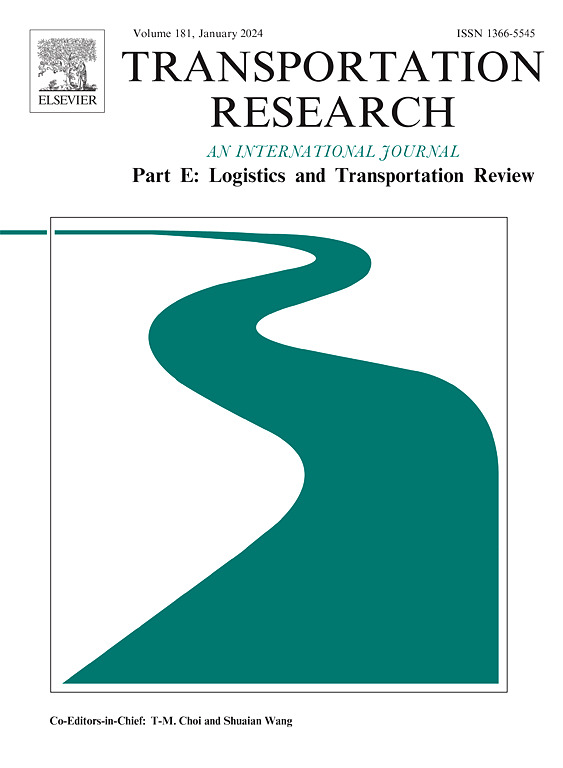C2M供应链中产品设计与制造库存的联合优化
IF 8.3
1区 工程技术
Q1 ECONOMICS
Transportation Research Part E-Logistics and Transportation Review
Pub Date : 2025-02-01
DOI:10.1016/j.tre.2024.103855
引用次数: 0
摘要
受消费者对制造商(C2M)计划在零售平台中盛行的影响,本研究考虑了一个供应商管理库存(VMI)供应链系统,该系统由零售平台和制造商组成,其设计并向客户市场销售新产品。特别是,制造商对产品属性的设计会影响点击该产品网页链接的客户的转化率,最终影响客户对该产品的需求。在该模型中,制造商共同规划产品设计和库存控制。通过对模型的研究,我们证明了制造商根据转换率做出改进的基本库存策略库存决策,并随着库存成本率的增加调整产品设计。进一步,我们发现制造商将产品设计和库存控制分开的计划对制造商不利,但对零售平台和整个供应链有利。这一发现可以解释为什么制造商的单独计划在实际的C2M计划中是一个广泛观察到的现象。在此基础上,提出了一种将数量折扣合同与成本分担合同相结合的混合合同方案来协调供应链系统。本文还考虑了主要模型的双重扩展,即异质性顾客评价和动态产品设计。本文章由计算机程序翻译,如有差异,请以英文原文为准。
Joint optimization of product design and manufacturing inventory in a C2M supply chain
Motivated by the prevalence of Consumer-to-Manufacturer (C2M) programs in retail platforms, this study considers a Vendor Managed Inventory (VMI) supply chain system, consisting of a retail platform and a manufacturer, which designs and sells a new product to a market of customers. Particularly, the manufacturer’s design of the product’s attributes would affect the conversion rate of the customers who click the web links to the product, and customer demand for the product eventually. The manufacturer jointly plans the product design and inventory control in this model. By exploring the model, we demonstrate that the manufacturer makes inventory decisions following a modified base-stock policy dependent on the conversion rate, and adjusts the product design as the inventory cost rate increases. Furthermore, we find the manufacturer’s separate plan of product design and inventory control harms the manufacturer but can benefit the retail platform and the entire supply chain. This finding can explain why the manufacturer’s separate plan is a widely observed phenomenon in practical C2M programs. We further propose a hybrid contracting scheme, which combines quantity discount and cost sharing contracts, to coordinate the supply chain system. Two-fold extensions of the main model, heterogeneous customer valuation and dynamic product design, have also been considered.
求助全文
通过发布文献求助,成功后即可免费获取论文全文。
去求助
来源期刊
CiteScore
16.20
自引率
16.00%
发文量
285
审稿时长
62 days
期刊介绍:
Transportation Research Part E: Logistics and Transportation Review is a reputable journal that publishes high-quality articles covering a wide range of topics in the field of logistics and transportation research. The journal welcomes submissions on various subjects, including transport economics, transport infrastructure and investment appraisal, evaluation of public policies related to transportation, empirical and analytical studies of logistics management practices and performance, logistics and operations models, and logistics and supply chain management.
Part E aims to provide informative and well-researched articles that contribute to the understanding and advancement of the field. The content of the journal is complementary to other prestigious journals in transportation research, such as Transportation Research Part A: Policy and Practice, Part B: Methodological, Part C: Emerging Technologies, Part D: Transport and Environment, and Part F: Traffic Psychology and Behaviour. Together, these journals form a comprehensive and cohesive reference for current research in transportation science.

 求助内容:
求助内容: 应助结果提醒方式:
应助结果提醒方式:


